More than a 1,200-year-old town of Bietigheim-Bissingen lies at the confluence of the Enz and Metter rivers in the hilly landscape of the middle Neckar Valley, just 24 km north of the state capital of Stuttgart. The town of Bietigheim and the municipality of Bissingen were merged in 1975 to create a large district centre. The charm of the area is most apparent in Bietigheim's remarkable old town centre. The old town boasts many half-timbered buildings and modern structures that create a pleasing harmony. If you happen to be in Stuttgart, pay a visit to the charming Bietigheim old town.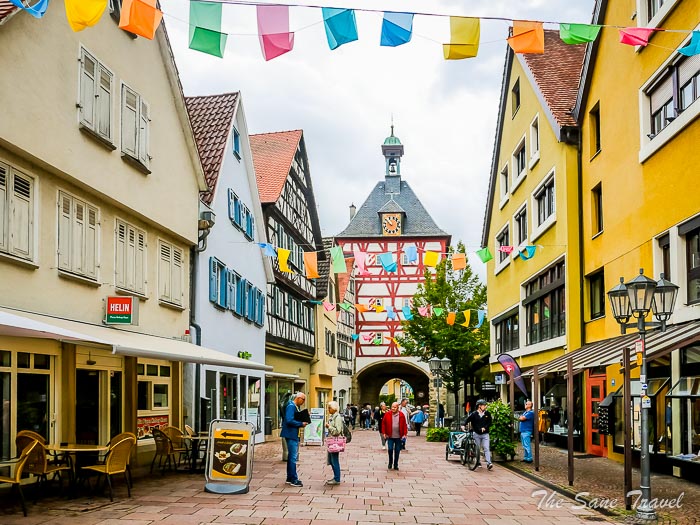
If you arrive at Bietigheim-Bissingen station by S Bahn from Stuttgart, keep an eye out for two statues at the station square: Local point by Reinhard Scherer and Taxidriver by Daniel Wagenblast.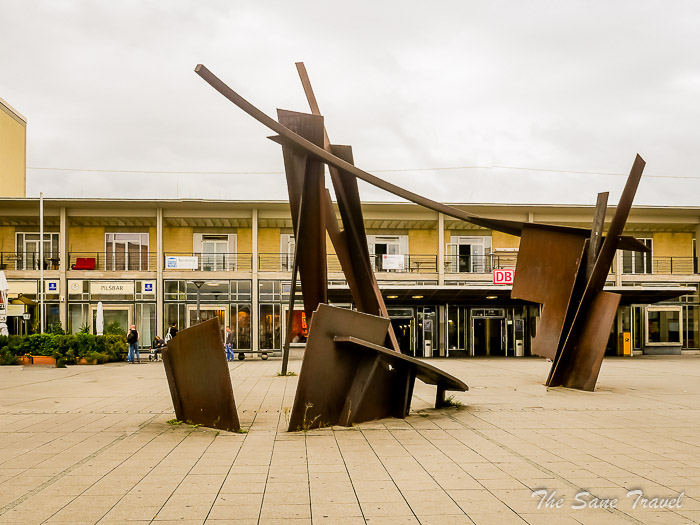
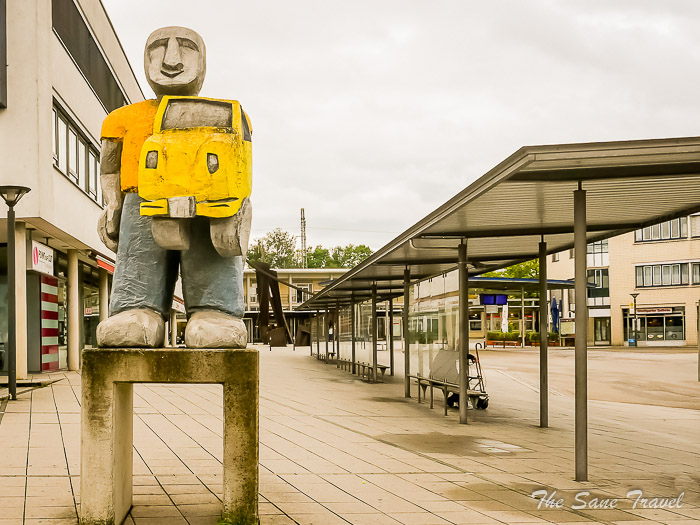 Then take bus number 551 or 554 to Kronenplatz in Bietigheim. It is where your city tour starts. Upon arrival, the first thing to catch your attention will be the Kuhriosum fountain.
Then take bus number 551 or 554 to Kronenplatz in Bietigheim. It is where your city tour starts. Upon arrival, the first thing to catch your attention will be the Kuhriosum fountain.
Kuhriosum
The Kuhriosum was created in 1987 by Jürgen Goertz. The proportions of the fountain and its function as the centre of Kronenplatz are reminiscent of historical squares with a dominant central monument. Instead of a classic monument base, an oversized milk can is used, and instead of a pathetic standing figure of a general on horseback, a hybrid creature of the mechanical cow is balancing on top.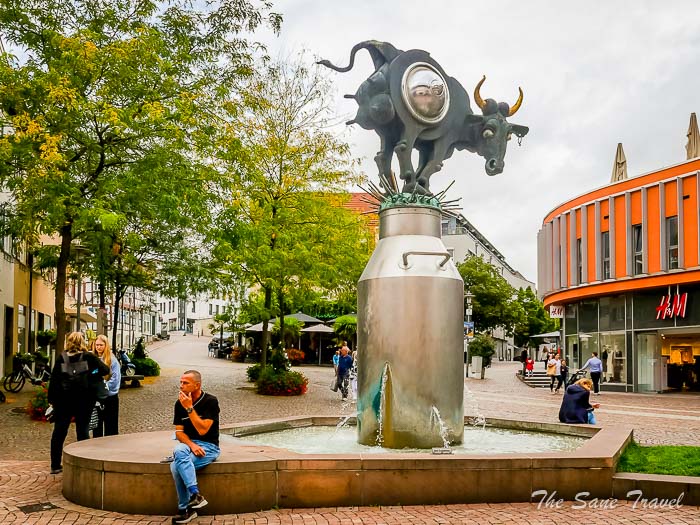
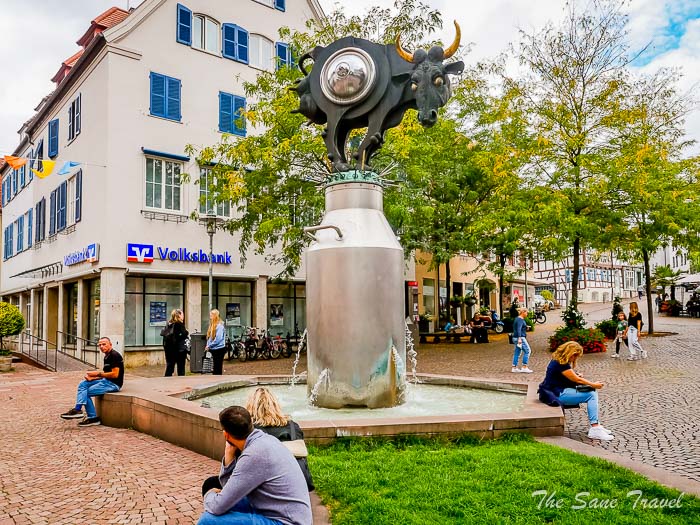
Then enter the old town through the Lower Gate, the only city gate that has survived from the 14th century, and continue your way on Hauptstrasse.  On your way, find an eye-catching statue Gossip by Karl-Henning Seeman.
On your way, find an eye-catching statue Gossip by Karl-Henning Seeman.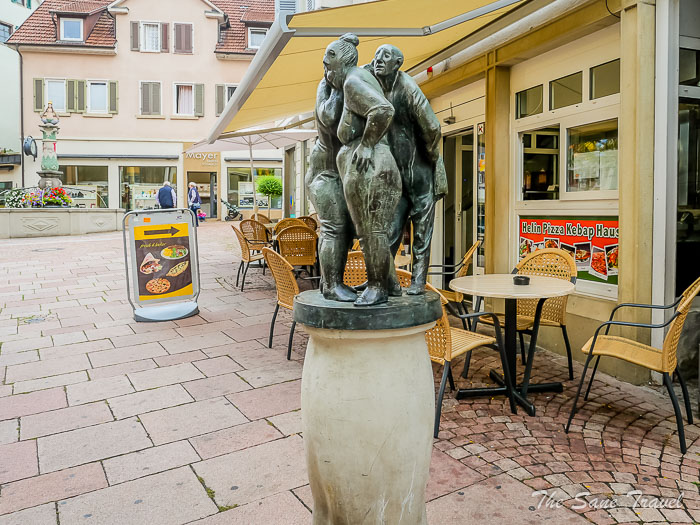
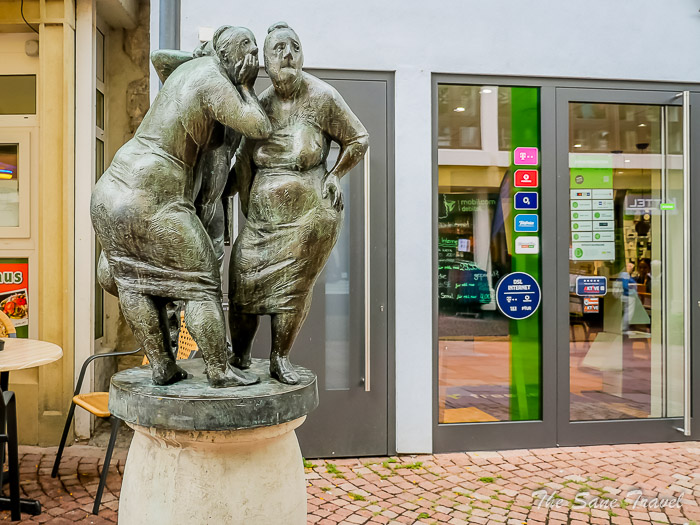
Continue your way among colourful historic buildings until you reach Market Square.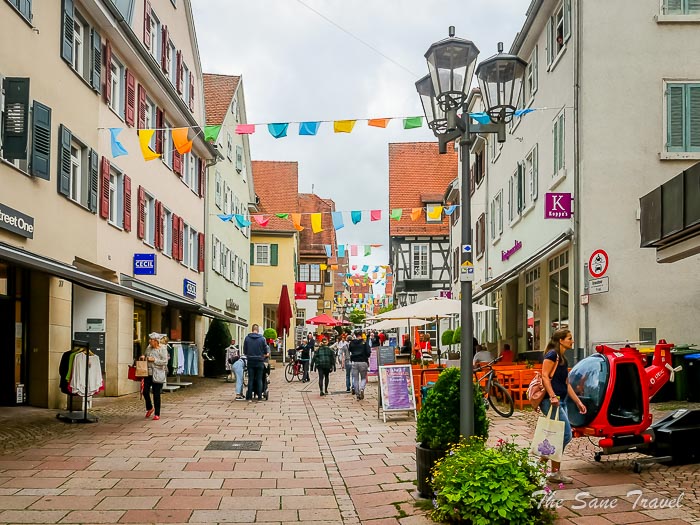
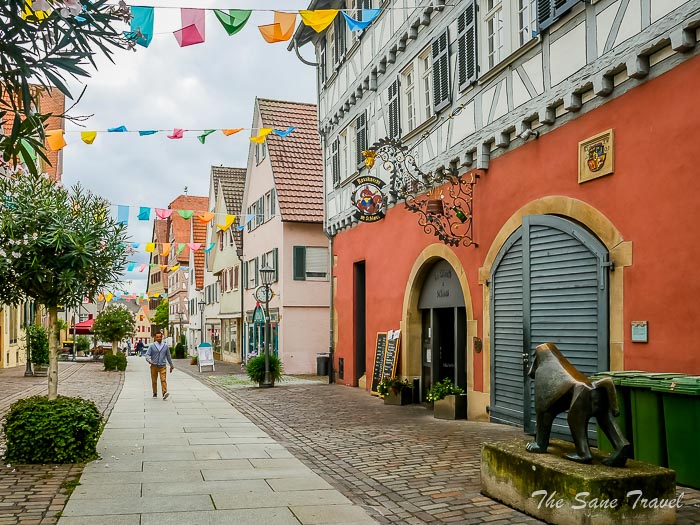
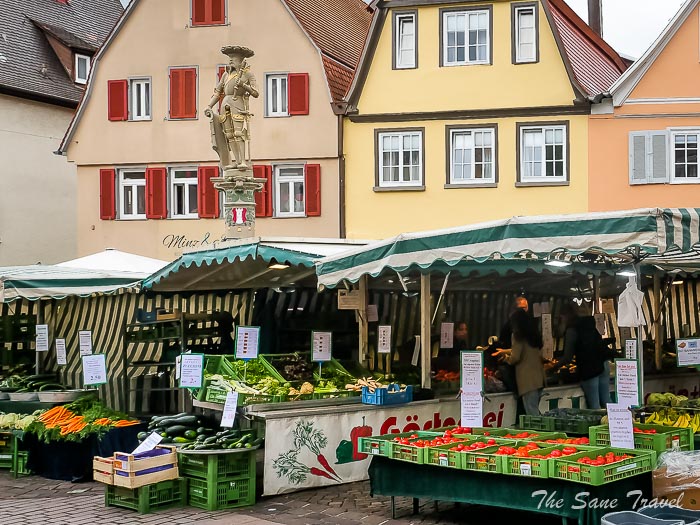 The Town Hall building dominates the square.
The Town Hall building dominates the square.
Town Hall
The Town Hall building from the early 16th century is perhaps the most admired structure in the vicinity. You will not miss its impressive clock tower, with the clock still working just fine. The historic Town Hall still serves as the mayor and his staff office.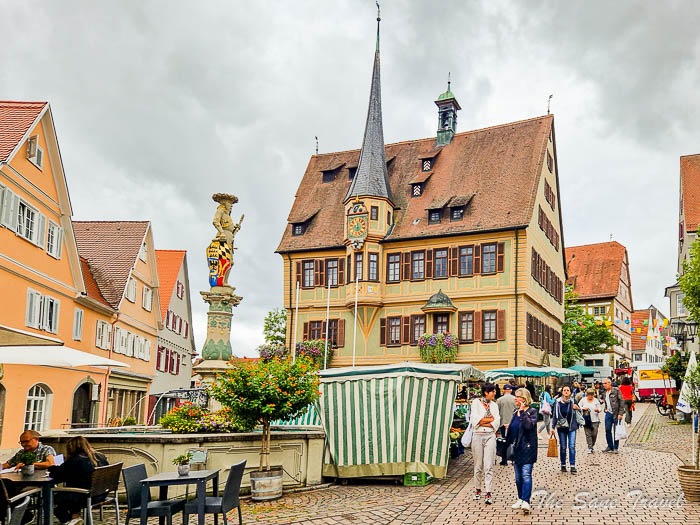
Market fountain Wappner
The Bietigheim market fountain from the middle of the 16th century depicts an armed man wearing a large feather barrette. In his right hand, he carries the shield with Wurttemberg´s ducal coat of arms, while in his left hand, a rod as a badge of ducal power. With these rulers´ attributes, he demonstrates the Duke of Wurttemberg´s sovereignty over the town. See him in the picture above.
Near the Town Hall, you will see the Town Church building from the 13th century. Notice the unusual position of the tower clock.
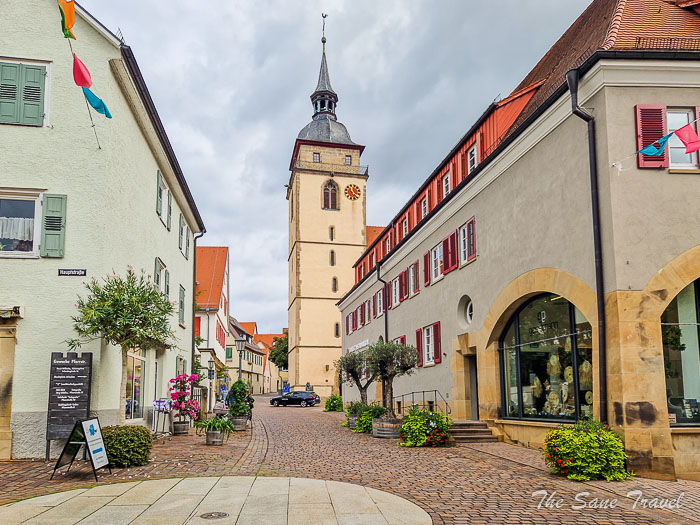
Hornmold House
Hornmold House is one of the most significant bourgeois houses of the Renaissance in southwest Germany. Hosting the Town Museum, Hornmold House itself is the most impressive exhibit of the museum. Its elaborate half-timbered architecture and almost entirely preserved interior decoration demonstrate the self-image and life attitude of the bourgeoisie in the 16th century rural town.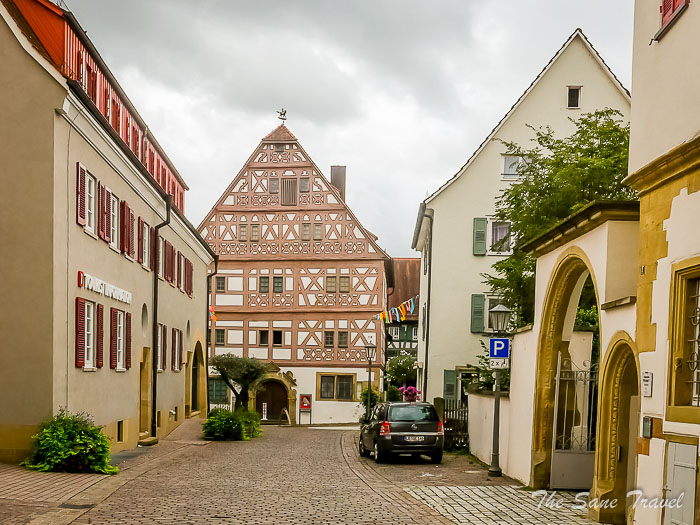
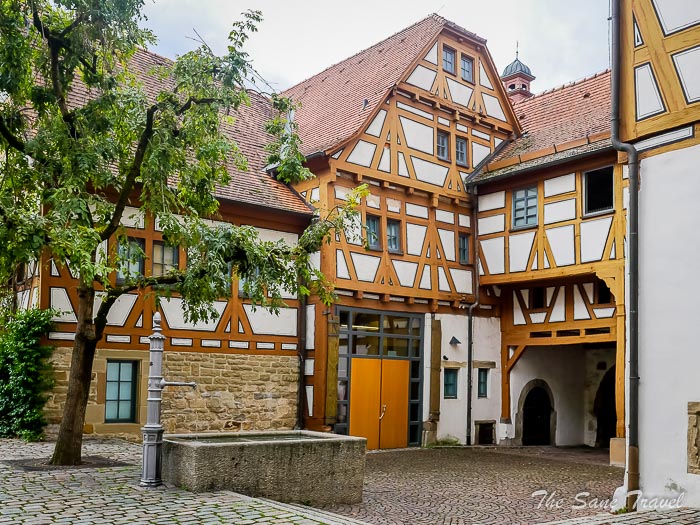
Bietigheim Castle
The 16th-century Bietigheim Castle, a former residence of the bailiff, combines antiquity with modern elements after the completion of renovation and refurbishment work in 2002. Serving as an official residence in the past, the castle is now recognised as a house of culture. 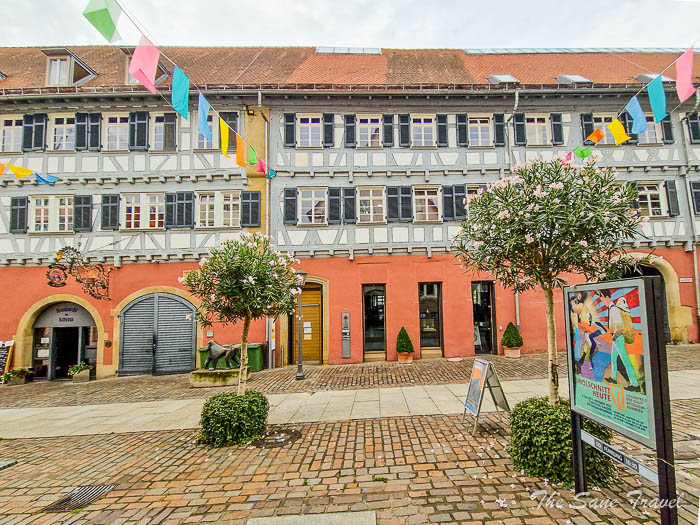 The castle houses the music school of the city of Bietigheim-Bissingen, the Schiller-Adult Education Centre, the culture and sports office, the Rossknecht home brewery, and two stores. The Youth Art School has also found its home in the castle area.
The castle houses the music school of the city of Bietigheim-Bissingen, the Schiller-Adult Education Centre, the culture and sports office, the Rossknecht home brewery, and two stores. The Youth Art School has also found its home in the castle area. 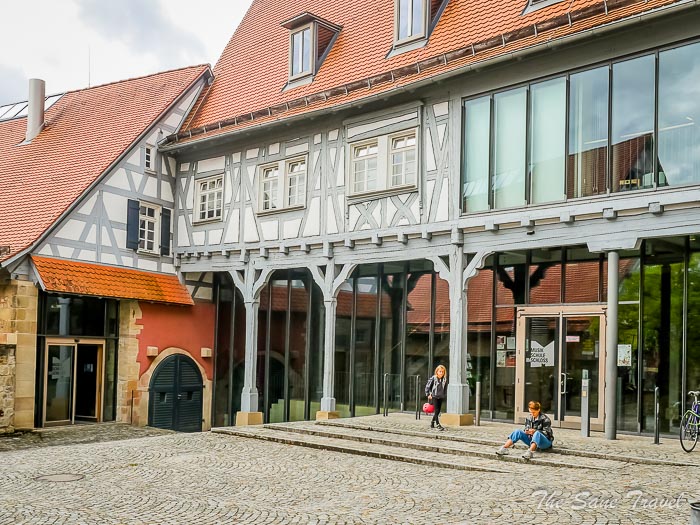 In addition, the whole townscape is enriched by a number of sculptures.
In addition, the whole townscape is enriched by a number of sculptures.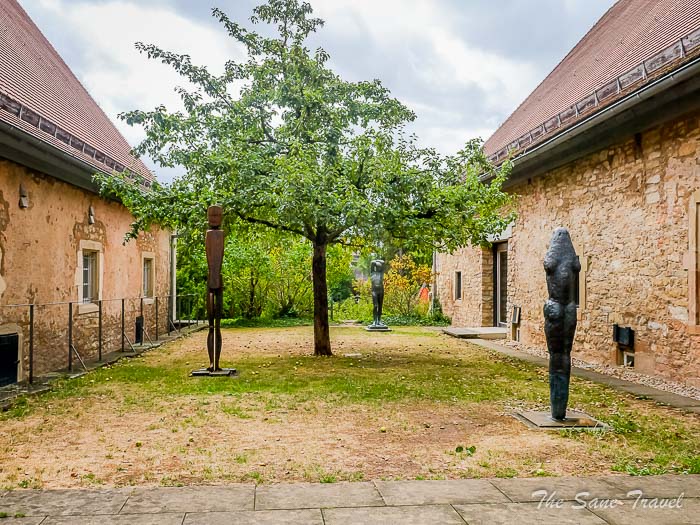
Villa Visconti
Located on Hillerplatz, the Villa Visconti is an extraordinary building with a brick facade and over 300 head sculptures of famous people. Completed in 2002, this "house of heads" enriches the Bietigheim landscape as an essential part of the overall design of the Hillerplatz created by Jürgen Goertz. The building is named after the Milanese Countess Antonia Visconti (1360–1405), the wife of Count Eberhard III, who was significantly involved in the development of Bietigheim.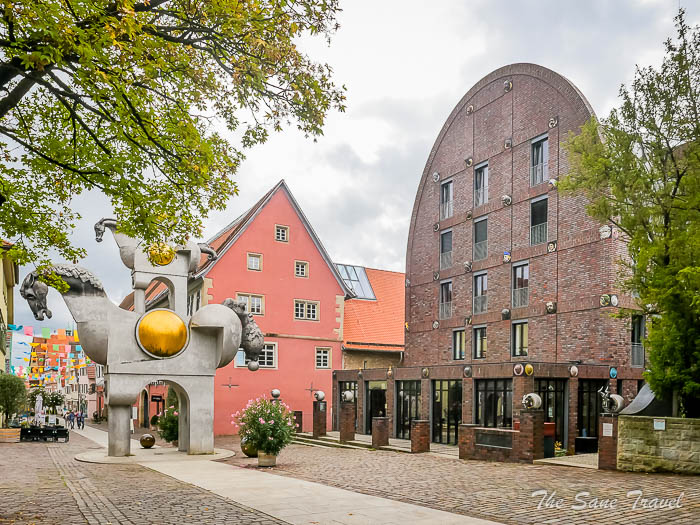
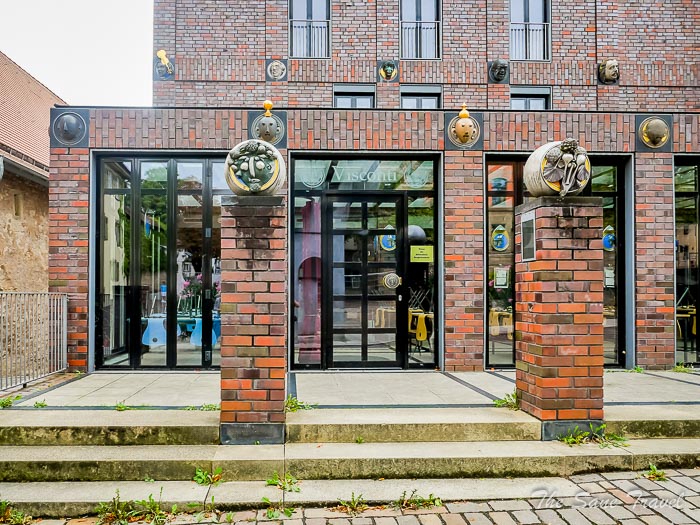
Next to the building, you will find several statues with horse motives, with the Tower of the Grey Horses by Jürgen Goertz being the most visible. It is reminiscent of the city gate by its shape.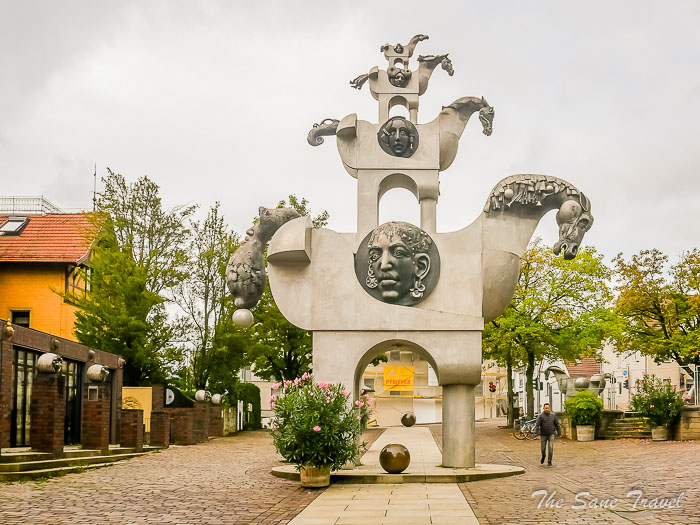
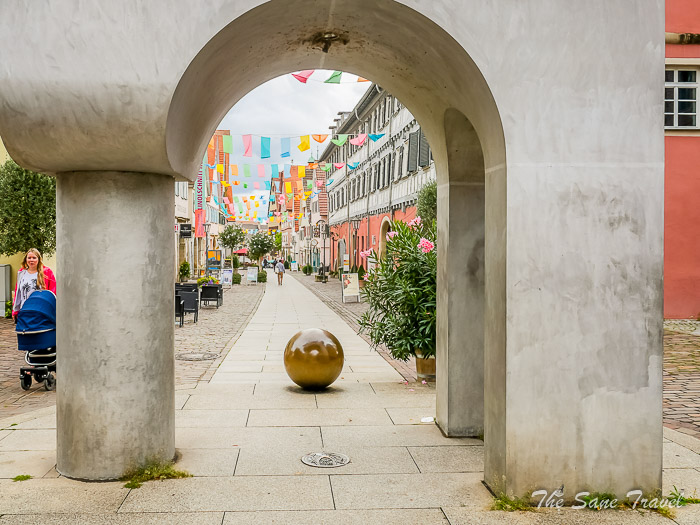
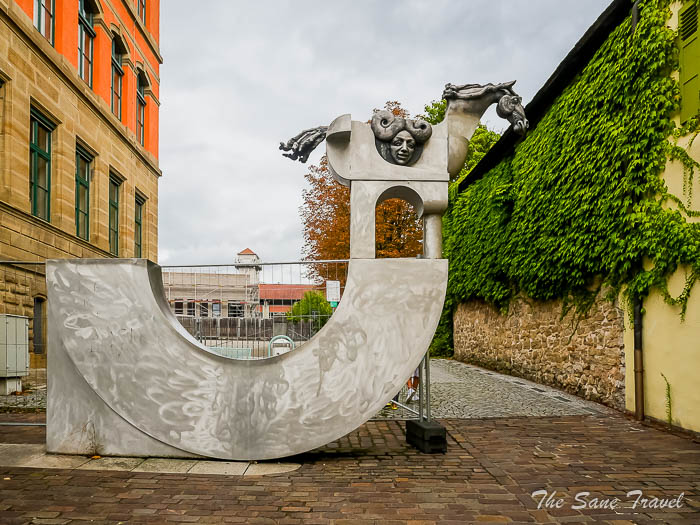
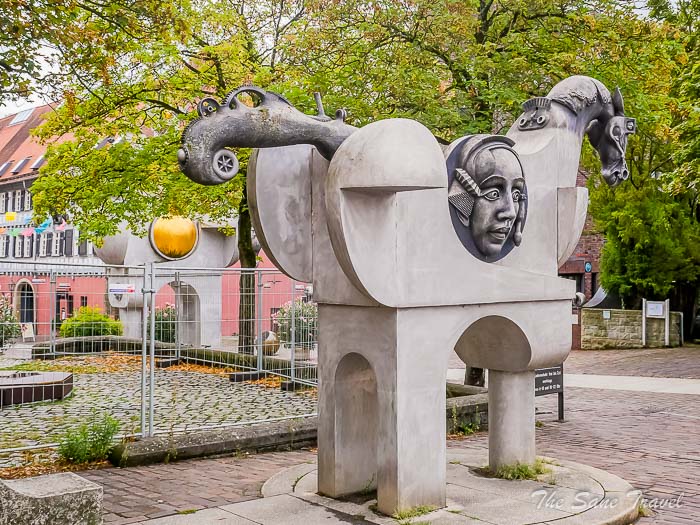
Then make your way back to Schieringestrasse and turn right to cross the Metter River and see the Japanese Garden.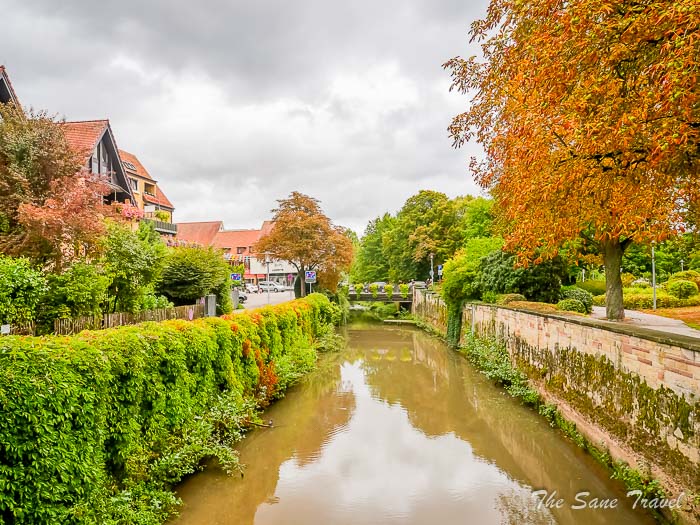
Japanese Garden
There would be no Japanese Garden in town without Erwin Baelz. Erwin was a highly regarded physician who spent 30 years in Japan in the second part of the 19th century. In 1905, he returned back home. The Japanese Garden was created in his honour and was redesigned by the Japanese horticulturist Jun Susuki on the occasion of the 1989 State Horticultural Show. 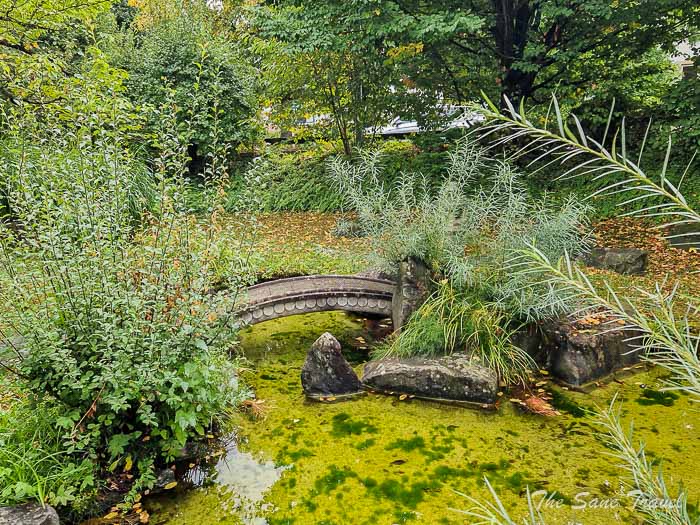 The entire area is blooming almost all year round because of the efforts of professional gardeners. Your next stop on your way to the train station will be the Bietigheim Enz Valley Bridge.
The entire area is blooming almost all year round because of the efforts of professional gardeners. Your next stop on your way to the train station will be the Bietigheim Enz Valley Bridge.
Bietigheim Enz Valley Bridge
It was built in the middle of the 19th century as part of the railway line Bietigheim Bruchsal. The Bietigheim Enz Valley Bridge is a bricked stone construction with two rows of arches. The viaduct is almost 290 metres long, more than 30 metres high and has 21 arches stretching over the Enz River Valley. It is one of the most beautiful structures from the early days of German railroads.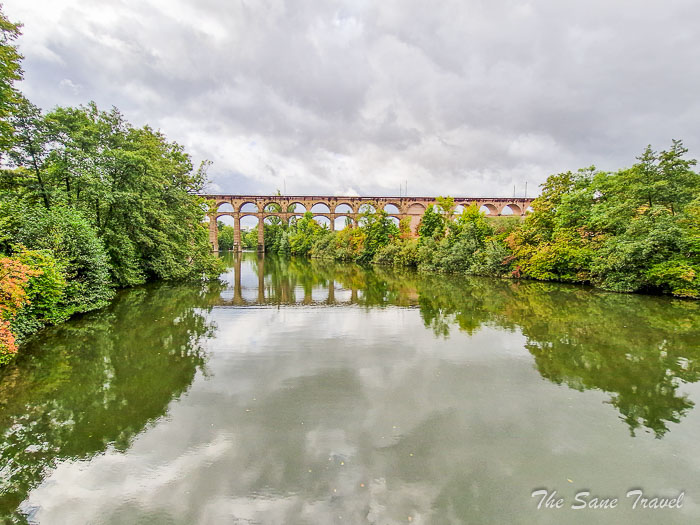
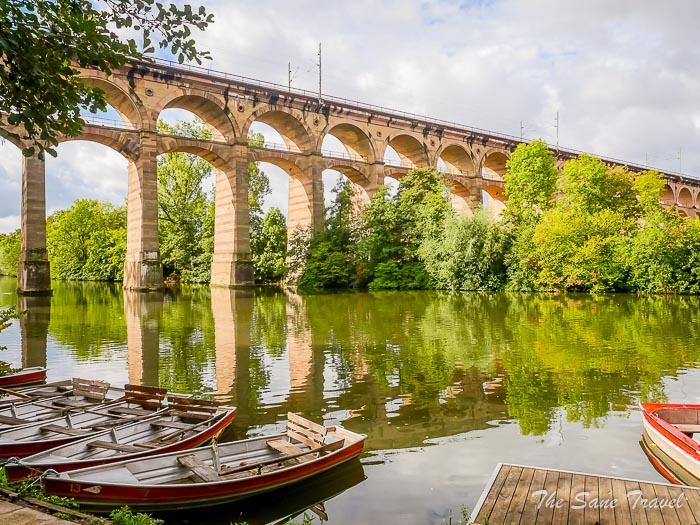
Horse Market
As you will notice during your visit, statues of horses are very popular in Bietigheim. One reason behind it is that the Bietigheim Horse Market takes place in the city annually. Right beside the Bietigheim Enz Valley Bridge is the festival area where the Bietigheim Horse Market occurs every year at the beginning of September. Being the largest horse show in southern Germany, this five-day event attracts several hundred thousand visitors who attend the festival to watch exciting horse riding and jumping competitions. The programme includes attractions in a large amusement park, a market, a parade, a Home & Garden exhibition, and a car and two-wheeler exhibition. Pictured below is a horse statue at the entrance of the festival area. 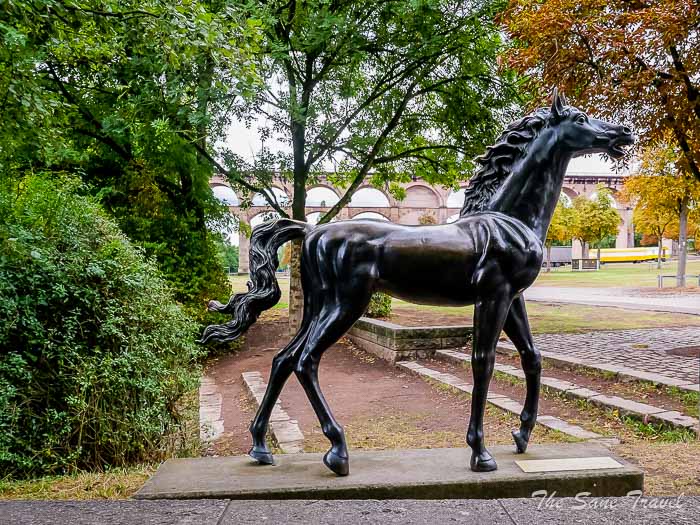
Practical information
You can reach Bietigheim-Bissingen from Stuttgart by train or S Bahn in a bit more than 20 minutes.
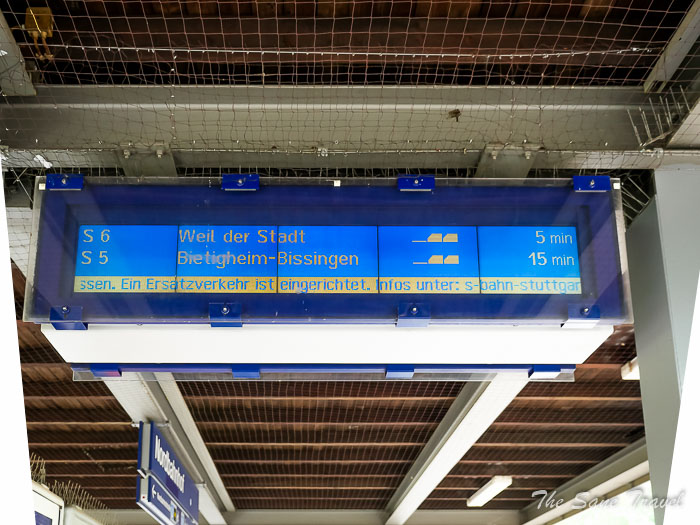 You should buy a Stuttgart Zone 3 ticket for your trip. You can do your tour of the town in a few hours and then pay a visit to Ludwigsburg in the afternoon. If you like to take your time, you can spend a full day in Bietigheim-Bissingen or even stay overnight there.
You should buy a Stuttgart Zone 3 ticket for your trip. You can do your tour of the town in a few hours and then pay a visit to Ludwigsburg in the afternoon. If you like to take your time, you can spend a full day in Bietigheim-Bissingen or even stay overnight there. 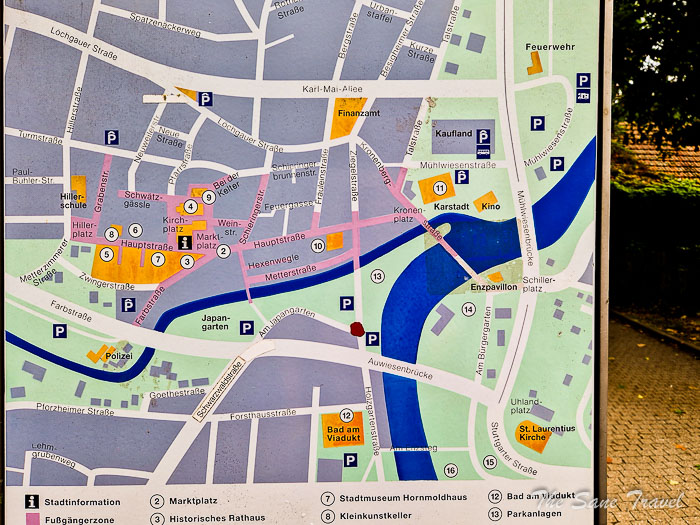 For your entertainment, there are at least three swimming pools in the town, including the "Badepark Ellental" for outdoor bathing and the spectacular Viaduct Pool, which incorporates the latest technology. Beautiful walks are to be found in the surrounding countryside.
For your entertainment, there are at least three swimming pools in the town, including the "Badepark Ellental" for outdoor bathing and the spectacular Viaduct Pool, which incorporates the latest technology. Beautiful walks are to be found in the surrounding countryside.
Like it? Pin it!
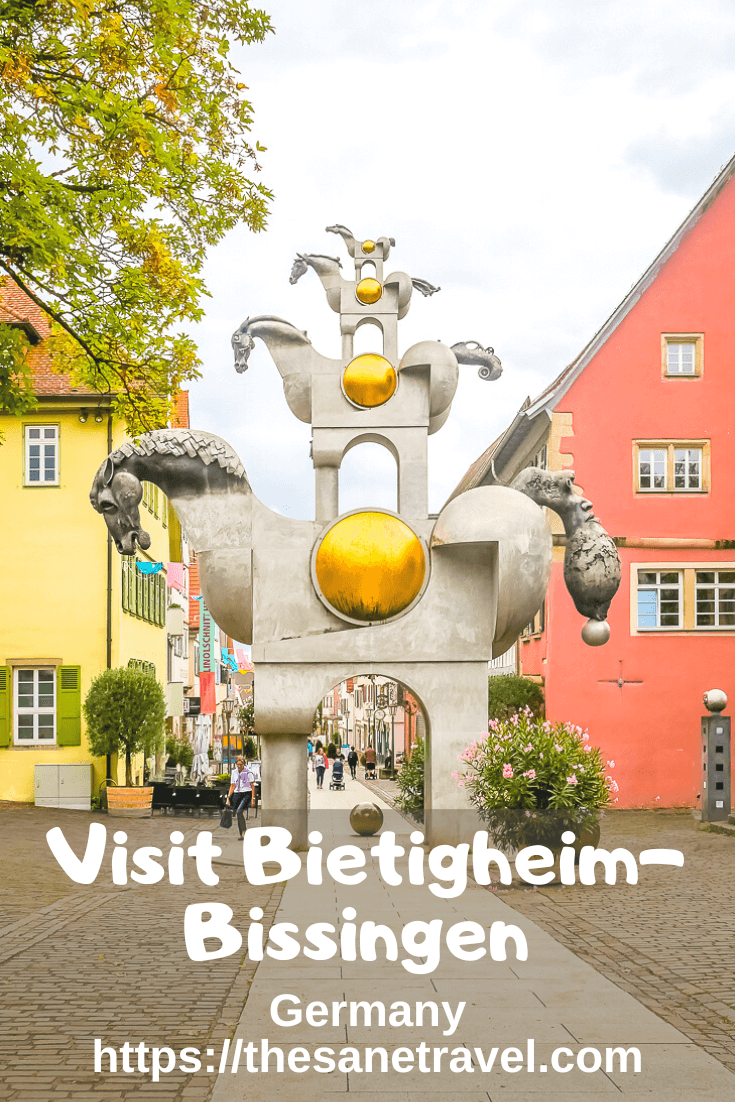
What did you think? Have you visited Bietigheim-Bissingen? I’d love to hear from you so please add your comment below.
Author: Anita Sane

About the author
Anita is a part-time traveller, passionate photographer and a retired career woman from Latvia, travelling mostly solo for more than 15 years. She is a skilled travel planner who plans and executes her travels by herself. Anita wants to show you how to travel the world and open your mind to new experiences. Follow her on Facebook, Instagram, Pinterest, Twitter and Bloglovin.

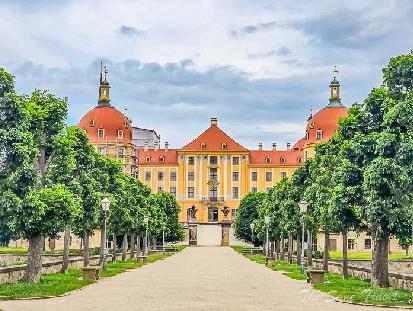
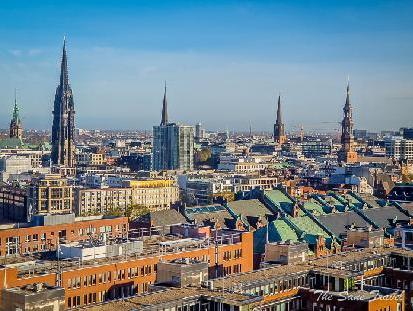
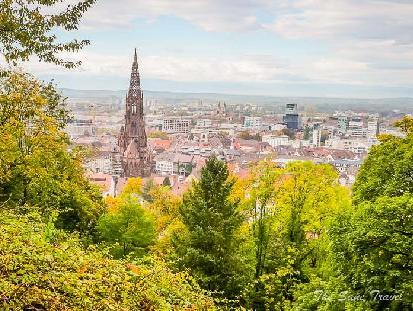
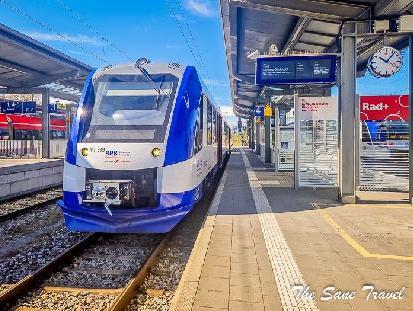
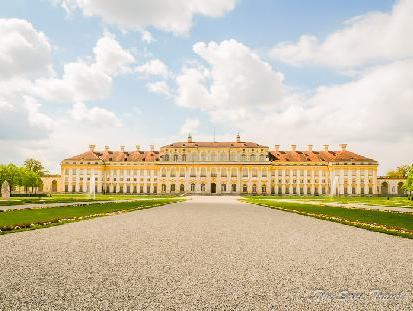
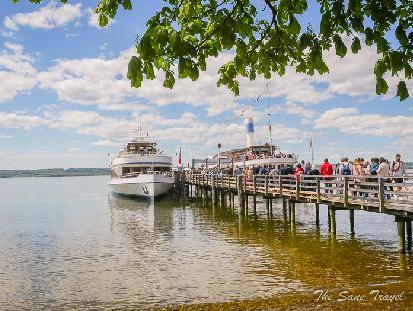
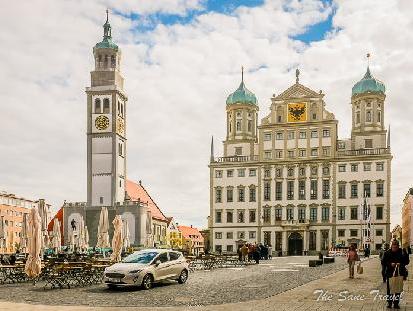
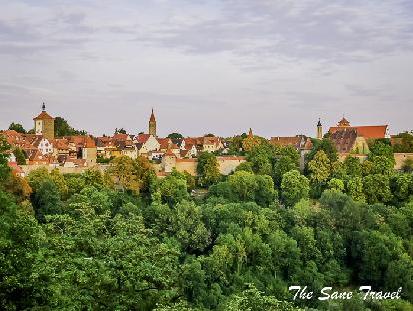
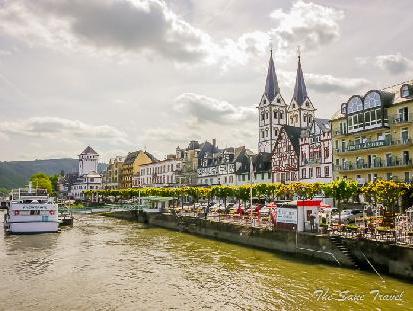
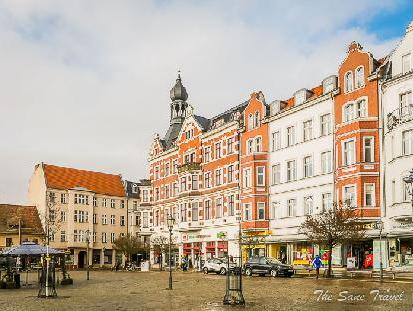
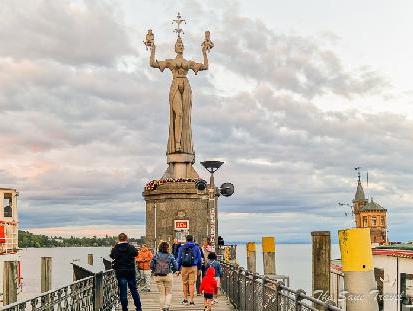
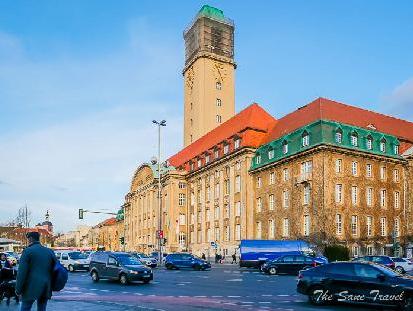

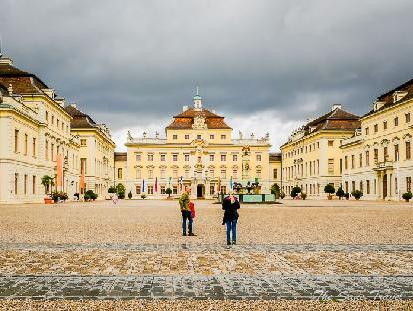
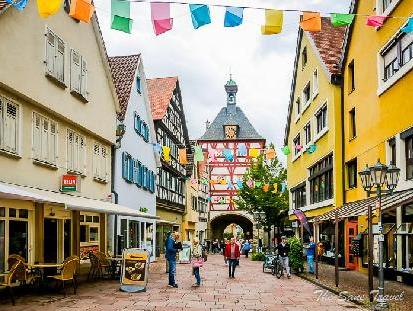
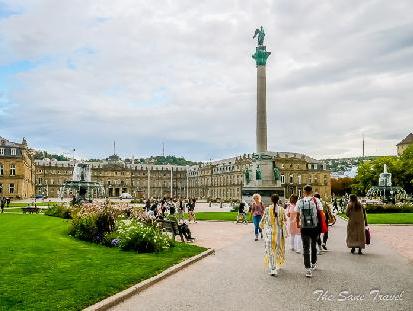

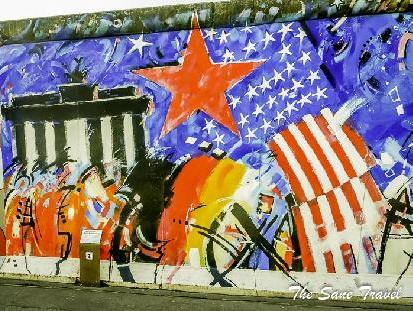
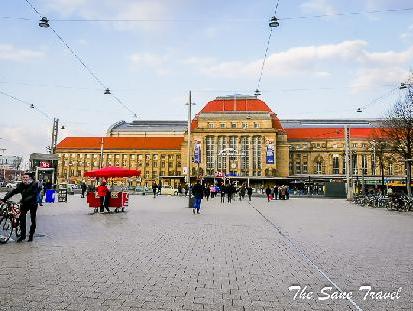
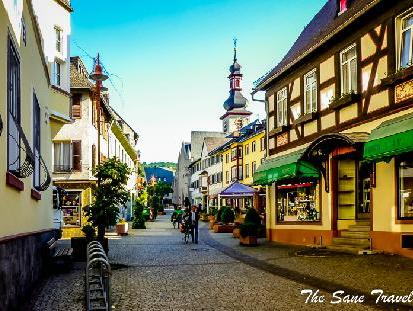
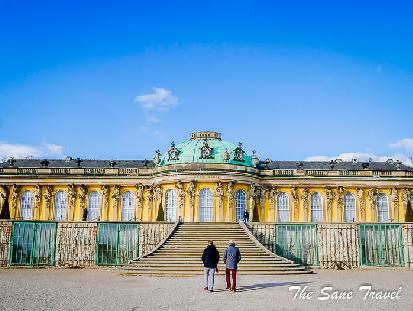
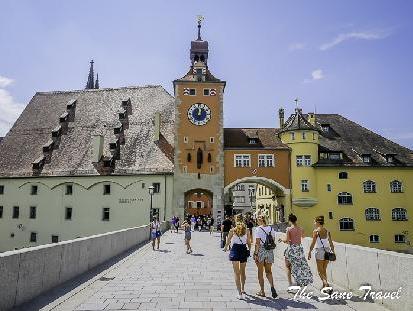
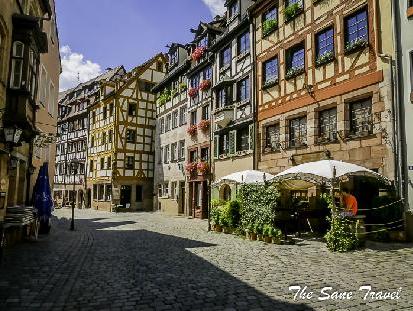
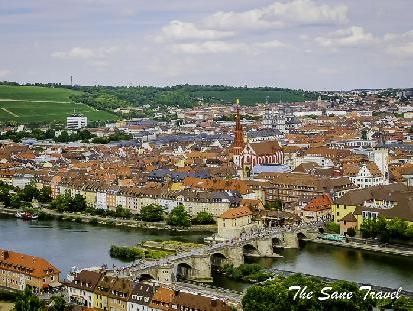
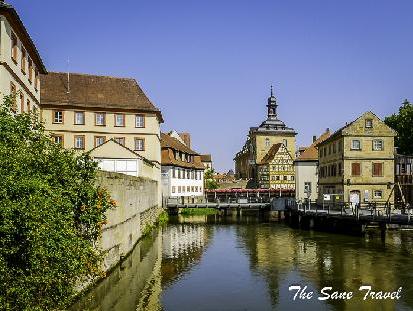
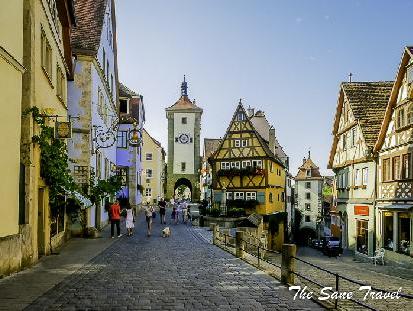
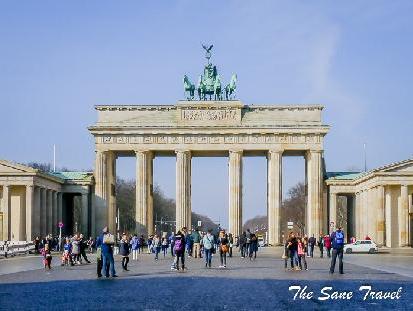
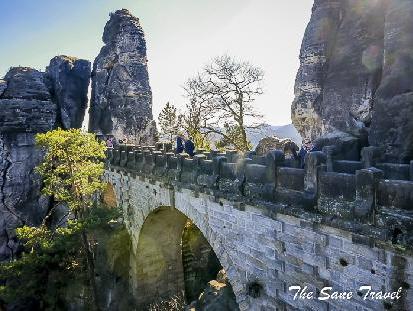
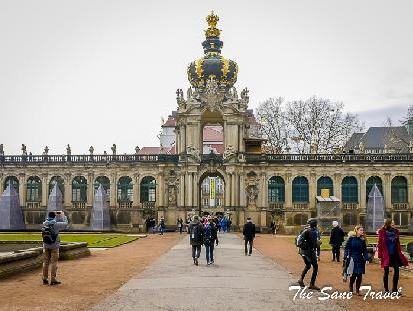
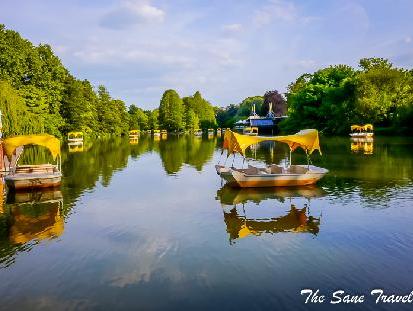
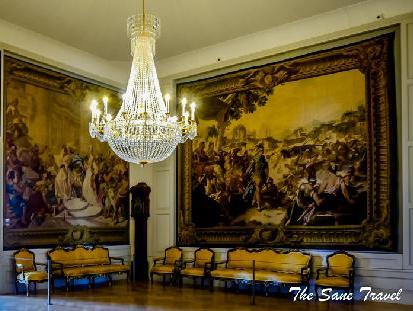
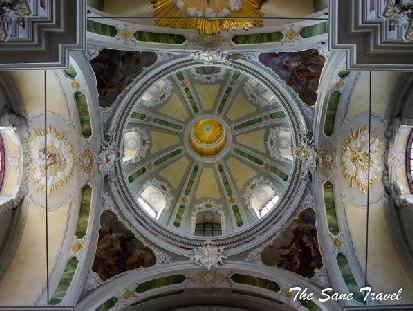
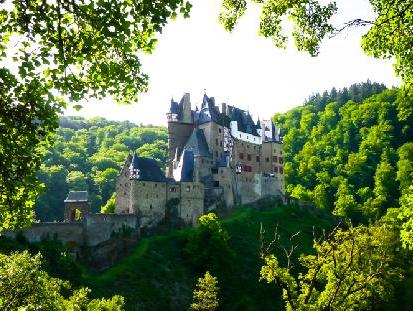
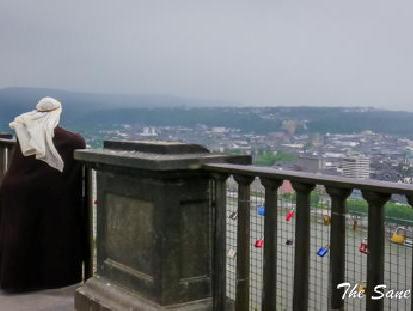
Report
My comments